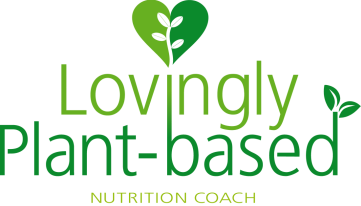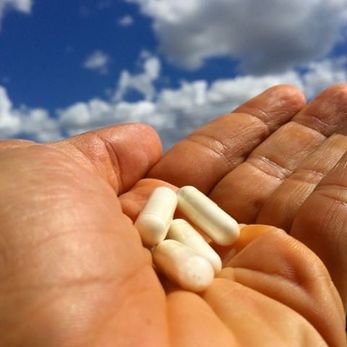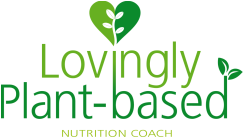Vitamin D - The Sunshine Vitamin
Vitamin D is a hot topic at the moment, and whilst not everyone agrees on its possible benefits and there is still some debate on just how much we should be getting, one thing is for sure, a lot of us our vitamin D deficient. In fact it is a worldwide problem and over a billion people worldwide are not getting enough of this vitamin.
Why do we need vitamin D?
Vitamin D isn’t actually a vitamin, it’s a steroid hormone that your body produces from sun exposure. It is best known for its role in bone health by increasing calcium absorption, however, science is showing that the importance of this vitamin doesn’t stop there. Did you know that vitamin D is actually responsible for the regulation of hundreds of genes? And according to research, optimising your vitamin D levels could be useful in preventing several types of cancer. Several studies have shown links between colorectal and breast cancer and low levels of vitamin D and other studies (here, here, here) indicate that adequate vitamin D intake may decrease depression and the risk of autoimmune diseases, such as multiple sclerosis.
Most of our cells have a vitamin D receptor. Our cells are constantly reproducing and sometimes things go wrong and a cell becomes sick or mutates. Experiments suggest that vitamin D may influence the cycle of a cell, by fixing it, inducing cell death (apoptosis), and/or restricting tumour blood supply (angiogenesis).
How do we make vitamin D?
The body has to process and chemically change vitamin D before it can be used.
First of all, the skin produces vitamin D when it is exposed to UVB rays from the sun. This vitamin D is then sent to the liver, where it is changed to 25-hydroxyvitamin D, or 25(OH)D. From the liver, the 25(OH)D goes to the kidneys, which transform it to 1,25 dihydroxyvitamin D (calcitriol), also known as “active vitamin D”.
First of all, the skin produces vitamin D when it is exposed to UVB rays from the sun. This vitamin D is then sent to the liver, where it is changed to 25-hydroxyvitamin D, or 25(OH)D. From the liver, the 25(OH)D goes to the kidneys, which transform it to 1,25 dihydroxyvitamin D (calcitriol), also known as “active vitamin D”.
Whilst long periods of sun exposure should be avoided, 15-30 minutes of sunlight on the skin per day can be enough to make this important vitamin. However, the amount of time needed in the sun varies greatly. The time of day, season and where you are in the world determines how much vitamin D you make; 15 minutes on a December day in England won’t expose you to the same amount as a person in Australia.
Other factors also affect the amount of vitamin D your body makes:
Other factors also affect the amount of vitamin D your body makes:
- People with darker skins need to spend 5-6 times longer in the sun than someone with fair skin.
- Obesity can inhibit vitamin D.
- Air pollution and clouds reduce the amount of UVB rays getting through.
- Sunscreen blocks or reduces UVB rays.
- Glass blocks UVB rays but not harmful UVA rays. The sun emits both UVA and UVB rays (and UVC rays, but they don’t reach us.) UVA (long) rays pass through glass and some clothes, whereas UVB (short) rays are blocked.
- People over the age of 70 produce less vitamin D.
There are phone apps, such as ‘Dminder’, which help you track your vitamin D level by calculating where you are in the world, the time of day, how much skin you are exposing, age, skin type, etc. But let’s not forget that sensible sun exposure should always be followed. Burning your skin through excessive sunbathing is not a good idea. Skin cancer and melanoma are not the result you want from trying to keep your D levels up.
Supplemental vitamin D?
If you live in the northern hemisphere, the sun won’t be offering any decent UVB rays from October to March and our modern lifestyle, which tends to keep us indoors, means that we aren’t always able to expose our bodies to the sun, if and when it appears, even during the spring and summer. Furthermore, since good levels of vitamin D are not found abundantly in plant-based food sources, we might need to resort to a supplement, especially during the winter months.
There are two types of vitamin D supplements; D2 and D3.
Vitamin D2 (ergocalciferol) is found in plants and vitamin D3 (cholecalciferol) is usually derived from lanolin, a waxy substance from sheep’s wool and is non-vegan.
A microorganism (litchen) also produces D3, which means that a vegan D3 is also available. I like the brand Viridian.
Vitamin D2 (ergocalciferol) is found in plants and vitamin D3 (cholecalciferol) is usually derived from lanolin, a waxy substance from sheep’s wool and is non-vegan.
A microorganism (litchen) also produces D3, which means that a vegan D3 is also available. I like the brand Viridian.
Which of the two (D2 or D3) is best is debatable, although most health professionals say that D3 works better. D3 is the same substance that is produced naturally through the skin from sun exposure.
Vitamin K2?
If we are taking high doses of vitamin D, should we also be taking vitamin K2 as Dr. Rhéaume-Bleue of ‘The Calcium Paradox’ suggests?
Vitamin K is a group of fat-soluble vitamins, K1 and K2. Plants make vitamin K1 and bacteria in your intestine and other microorganisms convert vitamin K1 into K2. Vitamin K2 is also made in some fermented foods, such as tempeh, sauerkraut, miso and above all, Japanese natto (fermented soybeans).
There is a lot of talk on the Internet about the importance of vitamin K2 and its role in directing calcium to the bones. Many of these articles and books suggest supplementing with K2 in the form of menaquinone-7 (MK-7). There is an MK-7 supplement derived from natto.
There is a lot of talk on the Internet about the importance of vitamin K2 and its role in directing calcium to the bones. Many of these articles and books suggest supplementing with K2 in the form of menaquinone-7 (MK-7). There is an MK-7 supplement derived from natto.
But before resorting to pills, make sure your diet is rich in dark, leafy greens (which are rich in vitamin K1). Next, keep your microbiota (gut bacteria/flora) happy, healthy and flourishing by eating plenty of fibre in the form of vegetables and fruit. You can also give your gut flora a helping hand by eating fermented foods, such as sauerkraut, tempeh, miso and natto which already contain K2 and probiotic. Avoiding unnecessary antibiotics is a must for a healthy microbiota.
How much vitamin D should we be taking?
The amount of vitamin D recommended varies from country to country.
The UK Department of Health recommends:
The National Institutes of Health (USA) recommends:
These new recommendations are 2-4 times higher than the original 200IU RDA, however, some health professionals consider them to be far too low, with studies pointing to the much higher recommendation of 1,000IU.
The UK Department of Health recommends:
- 400IU (10mcg) a day for everyone over the age of 1 year.
The National Institutes of Health (USA) recommends:
- 600IU (15mcg) a day for adults and adolescents
- 800IU (20mcg) a day for adults over 70
These new recommendations are 2-4 times higher than the original 200IU RDA, however, some health professionals consider them to be far too low, with studies pointing to the much higher recommendation of 1,000IU.
As with everything regarding nutrition, especially taking supplements in high doses, I suggest you make your own informed decisions. What might be considered health-promoting today may prove different in years to come.
What should our vitamin D blood levels be?
The Vitamin D Council suggests getting your 25(OH)D 25-hydroxyvitamin D levels checked and then to supplement accordingly. So what should our serum levels be?
|
The Vitamin D Council recommends:
Grassroots recommends:
|
To convert ng/ml to nmol/l
Multiply the ng number by 2.5. eg: 20 ng/ml = 50 nmol/l |
I think that there is a lot more research to come out on this vitamin. So stay tuned, be informed and in the meantime, catch some rays responsibly.
Here below are a few links regarding vitamin D which you might find interesting:
How Much Vitamin D Should You Take?
The Optimal Dose of Vitamin D Based on Natural Levels
Do Vitamin D Supplements Reduce the Risk of Dying from Cancer?
Grassroots Health
The Vitamin D Society
http://nutritionstudies.org/shining-light-vitamin-d/
http://www.mushroominfo.com/all-about-vitamin-d/
How Much Vitamin D Should You Take?
The Optimal Dose of Vitamin D Based on Natural Levels
Do Vitamin D Supplements Reduce the Risk of Dying from Cancer?
Grassroots Health
The Vitamin D Society
http://nutritionstudies.org/shining-light-vitamin-d/
http://www.mushroominfo.com/all-about-vitamin-d/
Copyright 2021 Nicki Perkins | www.lovinglyplantbased.com All rights reserved.
All content, videos and images found on lovinglyplantbased.com may not be reproduced or distributed, unless permitted in writing by Nicki Perkins, lovinglyplantbased.com
All content, videos and images found on lovinglyplantbased.com may not be reproduced or distributed, unless permitted in writing by Nicki Perkins, lovinglyplantbased.com


